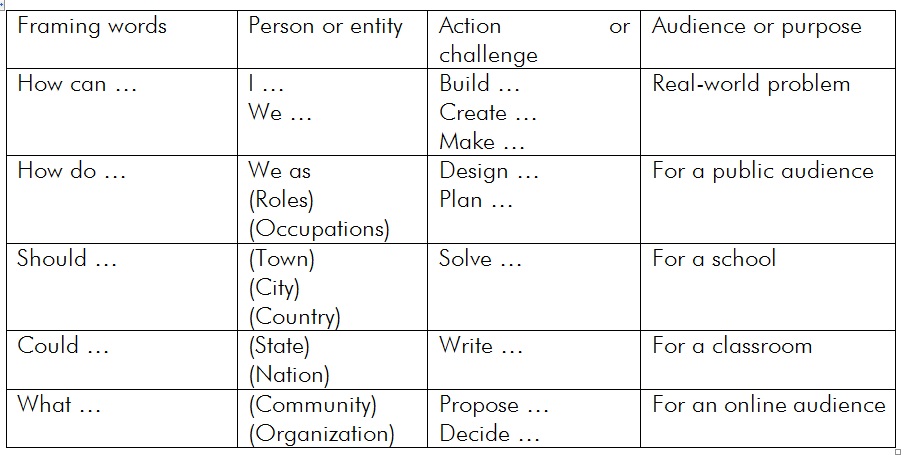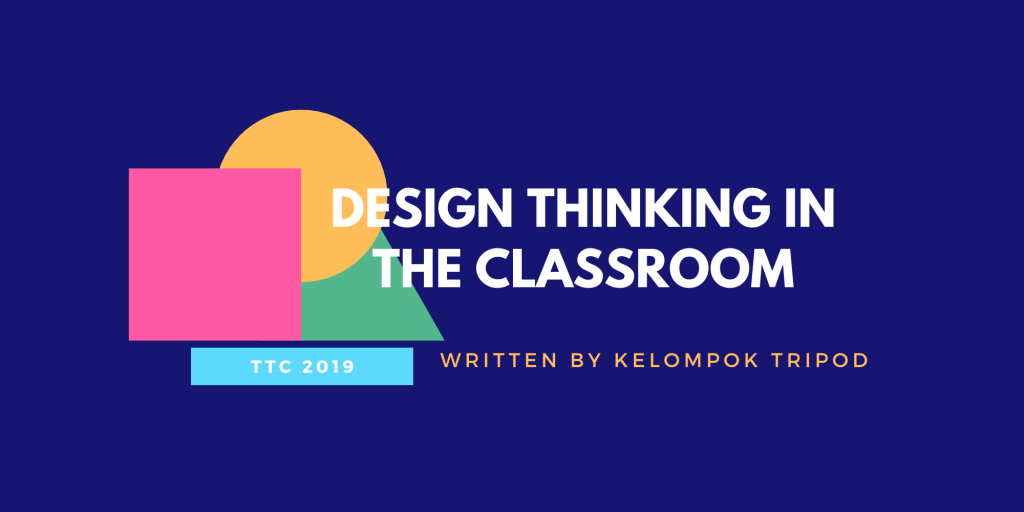How do we plan, implement and assess the design thinking projects in the classroom?
There are procedures needed in order to plan, implement and assess a design thinking project in the classroom.
PLANNING
In planning, teachers need to identify the content standards or learning goals of the lessons and what the students’ needs. In order to know the students’ need, teachers need to investigate the students’ ability, backgrounds, level of interest, prior knowledge, and learning preferences. Through questioning and considering those aspects, teachers will develop driving questions that encompass the design challenge, drive the students’ exploration and inquiry, as well as guide the students throughout the project. It is aimed to figure out the students’ real problems and what the students need to achieve in learning process. To develop driving questions, teachers can use Driving Question Tubric that teacher can adjust.
Driving Question Rubric:

When doing this, teachers have done the empathize phase in design thinking standards. Empathize phase has a fundamental role before implementing and assessing a design thinking project. In this phase, teachers can make a specific statement of what the students’ need by making DPS (define problem statement). To make a conclusion in DPS, teachers need to see the whole of what the students’ needs through empathize map.
By formulating DPS, teachers can brainstorm multiple ideas of real-world scenarios, and then decide the best real-world scenario that would best incorporate the standards which must be relevant, meaningful, and engaging. Then, teacher can decide which approach that will be implemented in creating design thinking project.
There are two approaches to create a design thinking project. The first approach is single-subject approach. Single-subject approach is conducted when teacher uses a particular subject to create a design thinking challenge that contains a real-world scenario. The second one is transdisciplinary approach. It is where a teacher or a group of teachers attempt to integrate the content standards of multiple subjects to create one design thinking project. Teachers need to connect the standards of multiple disciplines. If it not possible, teachers can unpack the standards into knowledge, skills or set of attitudes.
The following chart will help teachers to create and document a design thinking project:

IMPLEMENTING
In implementing design thinking project, after teachers identify the project’s design challenge, the end users, and the final product that the students will produce, teachers start to introduce the driving question and give a lesson on how to make observations and interview end users. This DQ would be introduced at the beginning of the project, after the entry event. From these questions, students will be able to identify the design challenge, the end users, and the type of product they will be designing. In transdisciplinary approach, DQ can be broken down into subsidiary questions in each subject. It allows the students to work on the same project but in different subjects or lessons.
The second phase for students is they will visit and make observations or interview community members to gain empathy. The students can work in groups or individual. Through empathy phase, students will be able to observe the behaviors, feelings, and patterns of the user. Besides, students will engage with users through conversations and interviews.
The third phase in implementing DT Project is the students need to synthesize the information from the users in empathy map. The teachers can guide the students on how to synthesize the information to find the needs of the users and insights learned from the students’ interviews and observations. Through this process, students will develop an actionable problem statement that brings clarity and focus to the design challenge.
The fourth phase is teachers let the students to brainstorm ideas that could help improve the users’ needs. At this phase, students will be able to visually generate variety of ideas for innovative solutions to the problem statement.
The fifth phase is creating the prototype or product that highlights their solutions to make the users better.In the last phase, which is test phase, teacher can accommodate the students’ prototypes by planning an expo where students present their prototypes to demonstrate what they have learned in front of peers, other students, teachers and their families. In presenting their works, students can also use technology to publish their prototypes through website or internet. The students will get feedbacks from them towards what they have created.
ASSESSMENT
The solution from what the students have presented can be assessed for its connection to the challenge, accuracy of the content, clarity of the communication, applicability for implementation, and efficacy of the idea among other things. In addition to the solution, the process that the individuals, as well as teams, went through in getting to a solution can also be assessed.***





